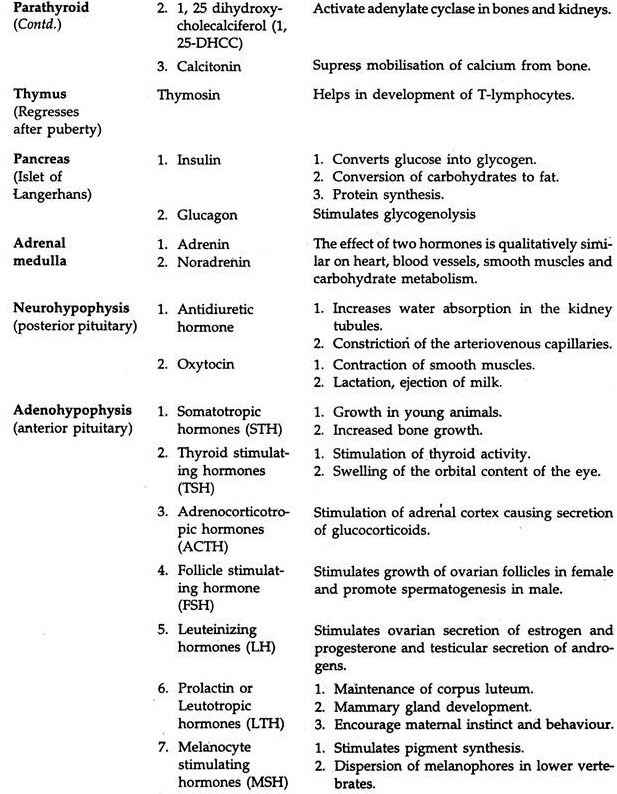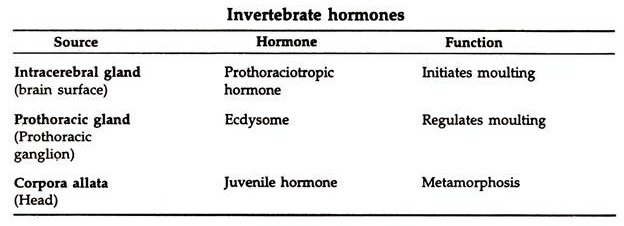In this article we will discuss about the function of hormones in the endocrine system of animals.
Chemical messengers, the hormones, (Gr. hormaein = to set in motion) are secreted by certain glands without ducts, the endocrine glands. The hormones induce physiological action in organs, elsewhere in the body. Hormones constituting the endocrine system coordinate and control activities of many organs, the targets in multicellular animals.
Some of the targets are located at quite a distance from the site of secretion. Since the glands secreting hormones are without any duct, the secretions are transported to the targets in different ways. The functioning of the endocrine system involves three components, the endocrine glands, the transport media and the target organs.
The cells of an endocrine gland are specialised in one direction and secrete only one type of chemical, the hormone, the composition of which is very complex.
ADVERTISEMENTS:
The hormones are transported to the target organs through:
(a) Diffusion,
(b) Blood and
(c) Axons of the neurons.
ADVERTISEMENTS:
In transport through blood some hormones are in solution in plasma, some are bound to albumin, some others non-specifically bound to albumin and still others specifically bound to certain proteins. The major bulk of hormones in transport through blood are bound to serum protein.
The vertebrate hormones have been extensively studied. The location of the endocrine glands in the body is almost same in relative position in all vertebrates. The hormones secreted by the neurons (nerve cells) are neurohormones. Neurosecretory cells in invertebrates are usually located in the brain or some nerve ganglia. The neurohormones are moved along the axon and released at the axonal tip.
Hormones are effective in a very low concentration and a minute quantity is capable of bringing about marked reactions in the cells of the target organs. Presumably, they have several independent mechanisms of action to regulate cellular activities. In general, the response of the targets to the hormones is slow, which may extend even for weeks and the control is long lasting.
Hormone action is highly specific. Many hormones are being carried at a time by the blood. Each type of target cells possess a specific protein, the receptor and only this can form a specific combination with a particular hormone. This is known as target selection.



